Australian Tropical Rainforest Plants - Online edition
Strychnos lucida R.Br.
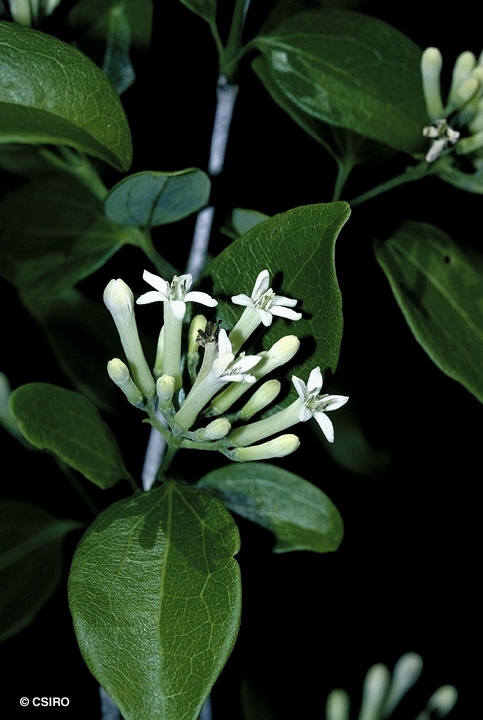
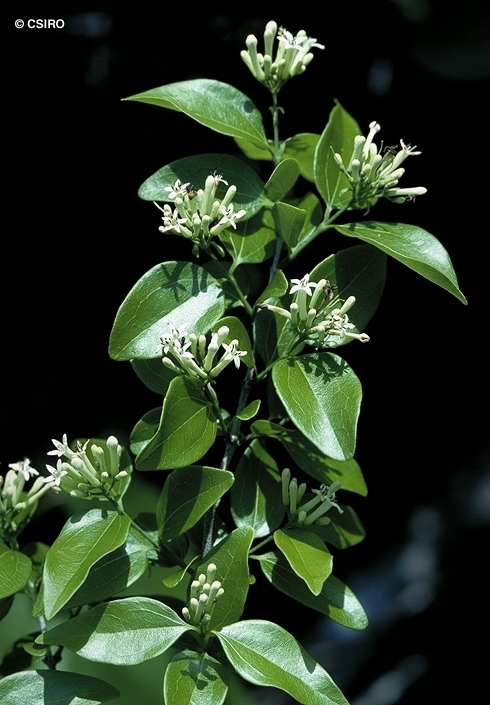
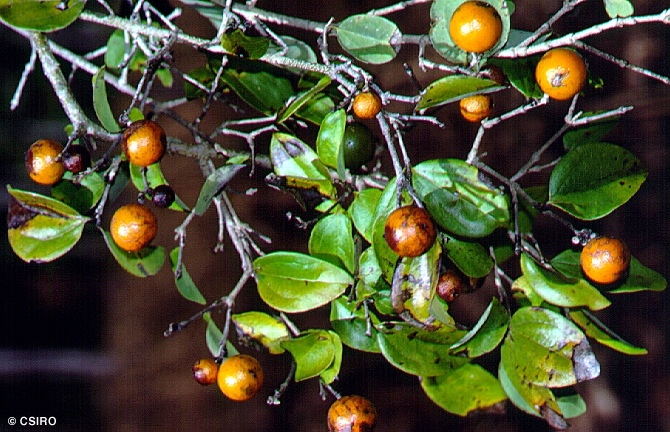

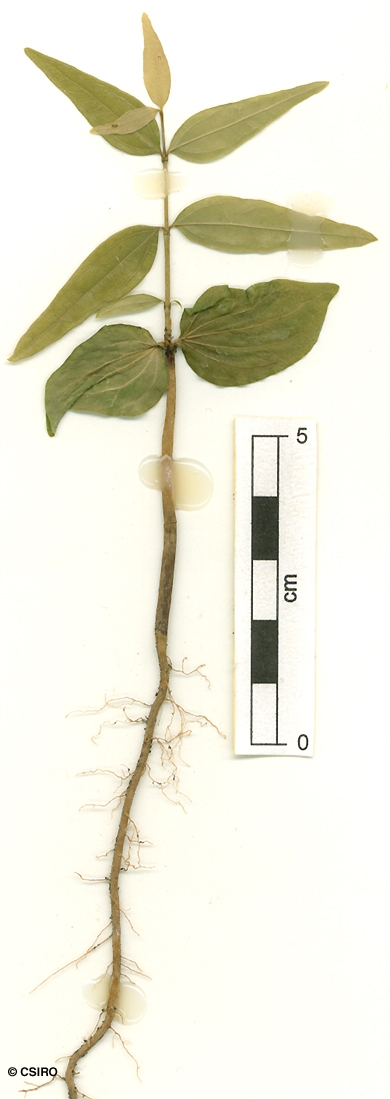
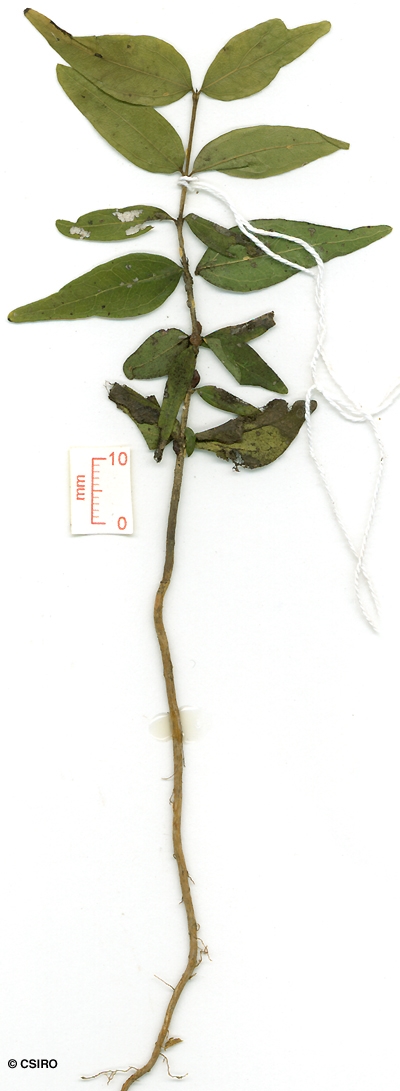
Brown, R. (1810) Prodromus Florae Novae Hollandiae : 469. Type: Australia, Carpentaria Is., Arnhem Bays, R. Brown [Bennett 2913]; lecto: BM; iso: North Coast, R. Brown s.n.; MEL. Fide Conn & Brown (1993).
Strychnine Bush
A small tree seldom exceeding 30 cm dbh. Inner and outer blazes quite distinct. Fine stripes in the inner blaze.
Cotyledons +/- cordate, about 25-30 mm long, glabrous. At the tenth leaf stage: leaf blade lanceolate, apex acuminate, base cuneate, glabrous and without spines in the axils. Seed germination time 110 to 229 days.
Occurs in WA, NT, CYP and NEQ. Altitudinal range from sea level to 450 m. Grows in monsoon forest and gallery forest. Also occurs in SE Asia and Malesia.
Although this species is suspected of being poisonous to stock the evidence is not completely convincing. Everist (1974).





